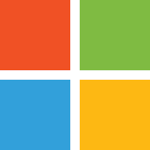 There’s no stopping the juggernaut of monthly updates coming from our pals in Redmond.
There’s no stopping the juggernaut of monthly updates coming from our pals in Redmond.
This month’s load of updates, based on analysis of the new, ‘improved’ Security Update Guide, shows that we have updates for Edge, Office (2010, 2013, 2016, and 2019), Sharepoint, SQL Server, Visual Studio, Windows (7, 8.1, and 10), and Windows Server (2008, 2012, 2016, and 2019), addressing eighty-three security vulnerabilities in all.
There’s a summary of this month’s updates linked from the SUG, but as usual, it’s bafflingly incomplete.
Windows 8.1 computers can get this month’s updates via Windows Update in the Control Panel. Windows 10 computers will get the updates over the next few days, unless they’ve been configured to delay updates temporarily. Windows 7 users are still basically out of luck.
Flash is DEAD
 Adobe’s kill switch for Flash went into effect as scheduled yesterday. Any Flash media you try to view from now on will show a placeholder image, which links to the End Of Life announcement for Flash.
Adobe’s kill switch for Flash went into effect as scheduled yesterday. Any Flash media you try to view from now on will show a placeholder image, which links to the End Of Life announcement for Flash.
That includes any Flash media you have lying around on your computer. For example, I found the Flash test animation on my main computer and uploaded it to my web server, where until January 12, it worked perfectly. That same Flash animation used to show on the main Flash help page, but of course that page now shows the placeholder as well.
And so ends the long, exasperating, security nightmare that was Flash. Good riddance.
 boot13
boot13 Earlier this week, Adobe released new versions of its Acrobat/Reader product line, to address a lone security vulnerability in earlier versions.
Earlier this week, Adobe released new versions of its Acrobat/Reader product line, to address a lone security vulnerability in earlier versions. Oracle’s quarterly
Oracle’s quarterly  If you’re old enough to remember the
If you’re old enough to remember the